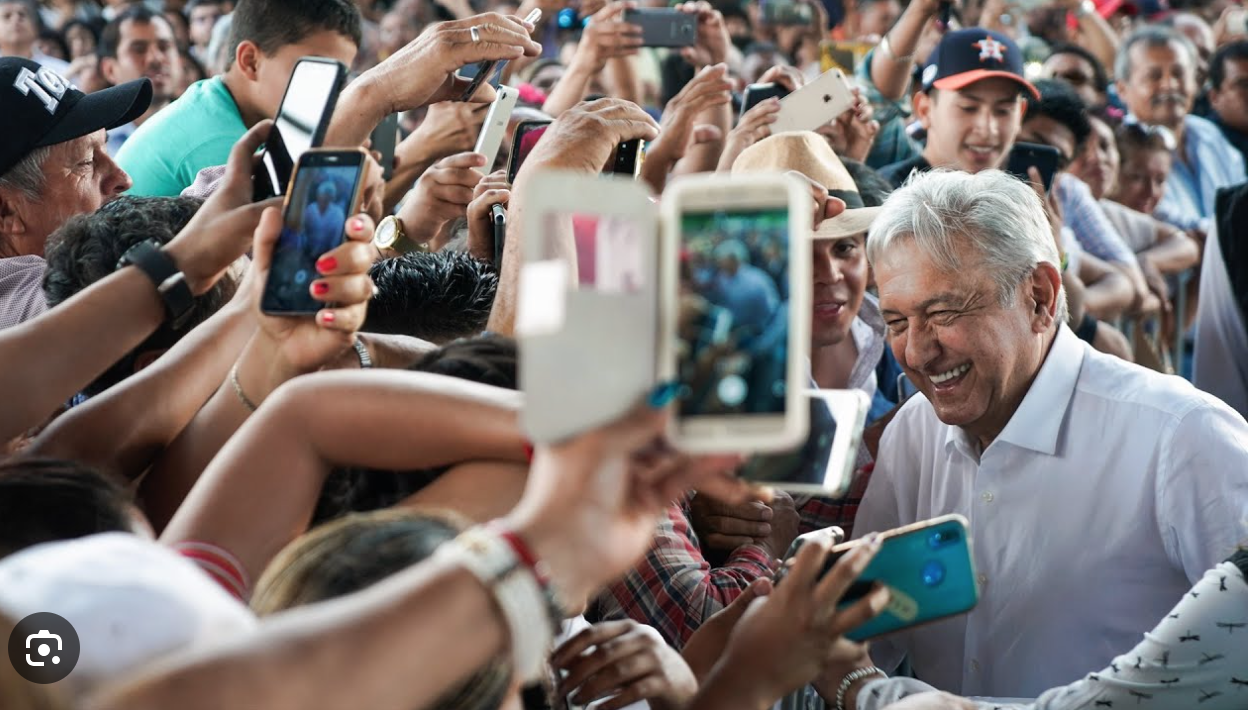
At a time of significant changes in Mexico’s political processes and with the 2024 federal elections just around the corner, the use of technology to revolutionize electoral strategies to establish innovative communication with citizens is on the scene. Among other purposes, digital tools seek to change the apparent apathy toward political figures who occupy or aspire to hold government positions.
According to the latest study of Internet Users’ Habits, conducted by the Internet Association in Mexico in 2023, more than 80% of the population uses the network nationwide. Likewise, of the total of these users, more than half spend seven hours or more a day surfing cyberspace. Mainly through their electronic devices, and consulting social networks (WhatsApp, Facebook, Instagram, Twitter, and TikTok, among the main ones) is what they do most. This is why these spaces have become capitalized places to carry out what today is known as cyberpolitics.
The watershed in Mexico to refer to this activity dates back to 2012. In that year, there was the first social movement led by young people and received the name #YoSoy132. These claimed to be against the election as president of then-candidate Enrique Peña Nieto and mobilized as a result of a demonstration organized inside the Universidad Iberoamericana in Mexico City when Peña Nieto, who later became president, held a campaign rally inside the institution.
The young people were accused of being financed by the opposition, to which 131 of them responded in a YouTube video, registration in hand, that they were active students and that they exercised their citizens’ rights to freely demonstrate. Thus, the symbolic 132 spread throughout the country.
For many, that moment was the germ of digitalized political activism, the birth of the partisan and ideological metaverse. Due to this movement, which had reactions mainly on Facebook and Twitter, other activities were led by activists from different sectors and have served to make visible issues that have to do with aspects such as gender violence, environmental care, animal protection and even to carry out denunciations for non-fulfillment of promises of rulers, or as a kind of “citizen journalism” to report questionable or controversial facts in real-time.
It is striking to note the contrast between the large number of young people who turn to techno-media languages to express their ideas and the fact that only a minority of politicians take advantage of digital tools for their electoral or government work. This contrast will have consequences. These young people between 15 and 35 years are the ones who will influence politics in the coming years.
On an international scale, in 2008, Barack Obama became a reference in the world with his cybercampaign that was made known in the portal “mybarackobama.com”. However, few societies and political elites have adapted to digital communication. In Mexico, for example, political campaigns use social networks or web pages to share the electoral process day-to-day. But that happens exclusively concerning what is done in “real” spaces, not in “virtual” ones.
This hybridization reduces the effectiveness of the strategy and limits the interaction with voters in social networks. This happens because it is not understood that the digital space is thoroughly different from the conventional, analogical one, and that; therefore, it requires other tools than the traditional ones, such as rallies, speeches, neighborhood tours, radio or TV interviews, among other resources.
However, there are exceptions. Characters such as Gabriel Quadri de la Torre in 2012 or Jaime Rodríguez Calderón, el Bronco, in 2018 executed strategies to build messages or communication with Internet users exclusively for digital platforms. Therefore, they acquired presence and became known in the online world. Although their respective campaigns were not directed toward winning the federal government, they served to position their image and recognition in the virtual world.
Everything changed with the COVID-19 pandemic
As of 2020, social networks became the stage where, in the face of the encirclement, a political campaign could be exclusively dumped in digital scenarios. The first campaign that achieved a functional strategy in networks was that of the current governor of Nuevo León, who in 2021, thanks to his digital strategy, achieved electoral triumph.
After the recognition of these strategies, In Mexico, the presidential candidates for 2024 began to use social networks to share other types of messages that would help them to position themselves in terms of young citizenship and thus overcome voter apathy. Pre-candidates such as Claudia Sheinbaum, Marcelo Ebrard, Adán Augusto López, Beatriz Paredes, and Samuel García already have a strong presence in networks. And, taking advantage of the fact that this space is not yet regulated by the National Electoral Institute (INE), it will undoubtedly play a fundamental role in the upcoming elections, opening a window to democracy in the digital era.
*Text presented at the X WAPOR Latin America Congress: www.waporlatinoamerica.org.
Translated from Spanish by Janaína Ruviaro da Silva


